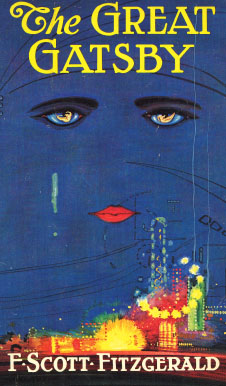|

|
ABOUT THE GREAT GATSBY: In many ways, "The Great Gatsby" is a ghost story. Our point-of-view character, Nick Caraway, begins with the haunted words, "In my younger and more vulnerable years ..." To adapt this novel to the stage was quite a challenge. But as I began to tackle the text, its virtuoso secrets began to reveal themselves. It seemed that the novel could be split into three distinct kinds of text: dialogue, descriptive imagery, and epiphanies. The last being what we remember . . ."And so we beat on, boats against the current, borne ceaselessly into the past." What is most striking is that surrounding every mention of Gatsby is a single image of light, or glass, or reflection, or gleaming (which we all remember); but it is usually followed throughout the narrative – within a sentence, a paragraph or a page – by multiple images of decay, rot, waste and death. This is the yin and yang of the story. It is not a glamorous tale. If you try for that, the story comes apart in your hands like gossamer wings. It is a "Walpurgisnacht", a Faustian witches night. Furies hound Nick at breakneck speed until he is finally able to break their curse, by spitting out his memories from dusk till dawn – freeing himself. A professor and dramaturge named Robert Scanlan, at Harvard, developed the "Plot⁄Beat Diagram", as a very simple, but unmistakably clear, method of breaking down a text and visually clarifying the difference between a dramatic moment that may be very short, but very important to the story, versus other extended and important-looking, but not seminal, moments in a text. Looking rather childlike and innocent, it is an invaluable tool to understand the rhythm of a play. It was indispensable to me on this project. |